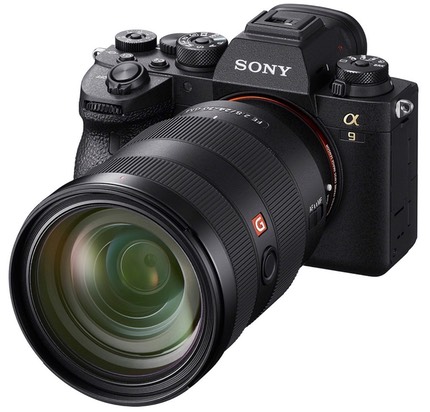Sony today surprised everyone with a press release type announcement of the A9 Mark II model. Frankly, I'm surprised, particularly given what changed with the camera, which really needs demonstration to show off.

Let's talk about what didn't change: still the same 24mp sensor with 20 fps electronic shutter, and with the same 693-point phase detect autofocus system as before. Sony mentions some tweaks and refinements that play into the sensor, exposure, and focus systems, but none of these really rise to the level of what I'd call interesting. Put another way, those changes wouldn't compel me to move from the original A9 model.
Physically, the camera gets a few noticeable changes. The weather sealing has been improved, particularly on the bottom of the camera. The grip has been subtly improved again, more matching the A7Rm4 changes. Indeed, we get the "better" AF-On button, thumb stick, and exposure compensation lock button first seen on the A7Rm4. Having been using the A7Rm4 for awhile now, I can say that Sony seems to be finally getting a handle on the...well...handling of their cameras.
To me, there are two changes that attract my attention.
First, the mechanical shutter has been improved and will do 10 fps and with less vibration. The new shutter is tested to 500k cycles, which is sort of the pro standard that Canon and Nikon established. One thing that I found in shooting with the A9 with a lot of sports was that I didn't use 20 fps (all electronic shutter) for various reasons. So the improvement on the mechanical shutter side was one that I asked for, and I look forward to testing it out.
The more important change, though, is some interesting workflow bits and pieces. Many will look at the 1000BASE-T Ethernet, 5 GHz Wi-Fi support, and USB 3.2 Gen 1 data transfer mechanisms as workflow improvements, as basically every way you can get an image off the camera wired or wirelessly has been improved. Moreover, both card slots are UHS II, so one slot isn't going to slow all that down (unless, of course, you put a slower UHS I or older card in it ;~).
More interesting is that the A9 Mark II now has voice memo capability. This is something I've enjoyed on my Nikon DSLRs since the D2h pioneered it over a decade ago. That said, Sony picked up on something I asked for that Nikon never did: automatic voice-to-text translation into the IPTC fields. Yes, it takes Sony's Imaging Edge application to do that, and Sony's description of its optimal use really centers around using the built-in FTP server, but it's a start. Moreover, this links into the new Transfer & Tagging capabilities of the camera, which allow you to embed IPTC data.
All in all, the A9 Mark II looks like a reasonably solid evolutionary update to hardware features. If Sony makes the same commitment to firmware updates over its lifetime that they did to the original A9, I think this will turn out to be a well-rounded camera, and one that appeals to all those agencies sending photographers to the 2020 Olympics.
Your move Canon, Nikon.
